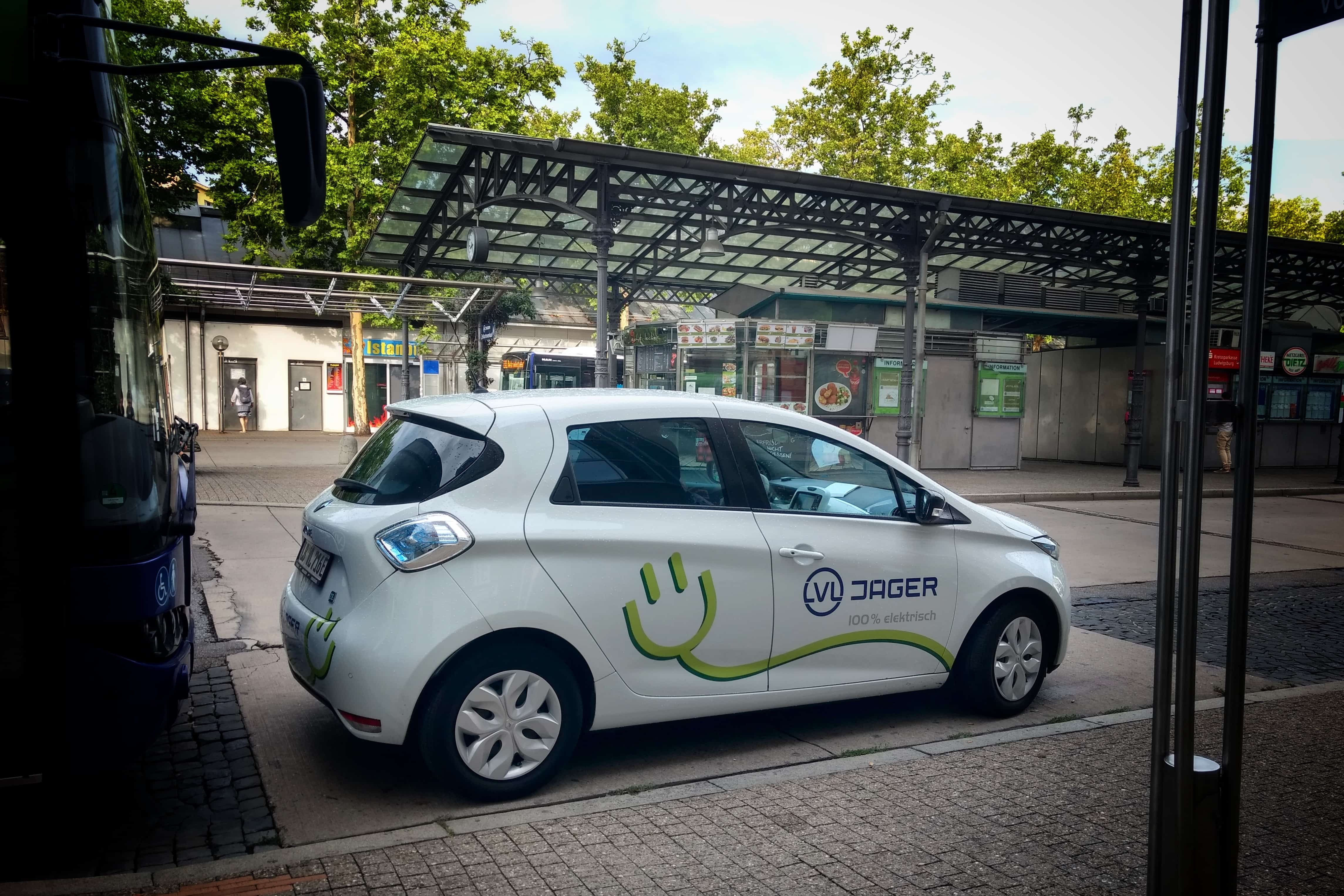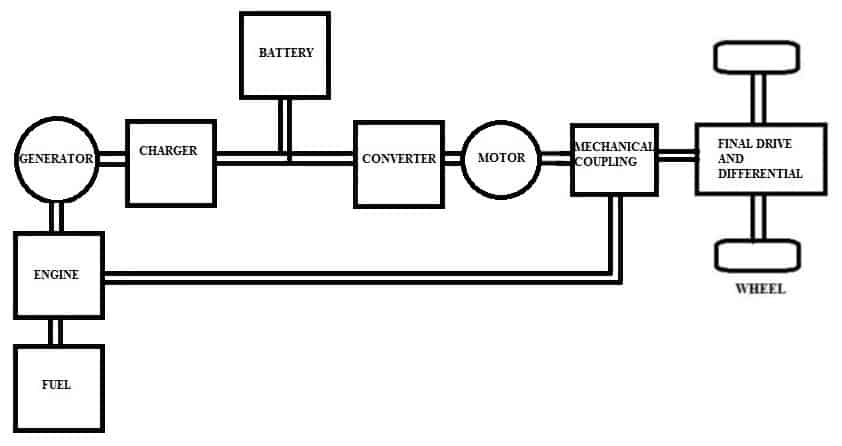
Electric Vehicles are those vehicles that use one or more electric motors for propulsion. Vehicle manufacturers focus on electric mobility these days.
They have either started the manufacturing of electric vehicles or declared their plans for electric vehicles.
Why Electric Vehicles?
Environmental issues and the expected reduction of conventional fuels in the near future attract manufacturers to the electric vehicle.
A typical passenger vehicle emits around 4.6 metric tons of Carbon-dioxide per year. And one liter of petrol emits 2.3 kg of carbon dioxide when it burnt.
Atmospheric temperature increases as a result of the greenhouse gas emission. Environmental impacts of conventional vehicles and depletion of fossil fuels make alternative fuel vehicles and electric vehicles popular.
Have you ever seen an electric vehicle?
The first electric vehicle that I saw was a remote-controlled toy car. 🙂 Electric vehicles can be toy cars, trains, trolleybus, cars, scooters, trucks, buses, and even aircraft these days!
American space agency NASA tests electric aircraft Maxwell X-57 and plans to set the standard for all-electric airplanes. Here is the link to the article and here is a link to the video.

The international space station works make use of solar energy.
The first solar-powered aircraft “Solar Impulse 1” had its first flight in 2009 and “Solar Impulse 2” traveled around the globe in 2015.
Electric vehicles have their advantages and disadvantages compared to conventional internal combustion engine vehicles.
People will go for an electric and hybrid electric vehicle if they are far better than IC engine vehicles. A comparison of conventional and electric vehicles is necessary to find which one is the best.
Advantages of Electric Vehicle
Why should people use electric vehicles? Why would one go for an electric or hybrid electric vehicle when conventional internal combustion (IC) engine vehicles are popular and available?
The following are a few advantages of EVs that might convince you why one must go for an electric vehicle. 🙂
#1 Electric Vehicles have zero tailpipe emission
Electric motors emit no gases as Internal Combustion Engine does. So Battery Electric vehicles are zero-emission vehicles. Hybrid Electric Vehicles (HEV) are low emission vehicles compared to IC engine vehicles..
Read more to know about different types of electric vehicles.

If we consider the air pollution electric vehicles are eco-friendly. Are Electric Cars really good for the environment?
Environmental pollution makes vehicle manufacturers think about electric vehicles rather than the IC engine vehicles. Governments also started taking measures to reduce the carbon footprint.
The world’s most populated cities suffer from air pollution. As a result, diesel engine vehicles have been banned in several cities. Emission-free electric vehicles are highly important here.
#2 EVs cause no noise pollution
Noise pollution from electric vehicles is lesser than that of conventional vehicles. Noisy IC engines are replaced with silent electric motors in electric vehicles.
Electric motors are so silent compared to an internal combustion engine. Battery electric vehicle that has an only electric motor is not even recognized with noise when it moves.
#3 Electric vehicles are maintenance free/less maintenance
The power train of an electric vehicle is not as complex as that of an IC engine vehicle. The maintenance cost of electric motors is less compared to that of IC engines.
It’s estimated that an electric car has less than 25 (Chevrolet Bolt) moving parts while an IC engine vehicle has more than 10000.
Other components such as oil, engine cooling system, exhaust system, etc. are absent in an electric vehicle.
You can read
#4 Low running cost
The cost to run an electric vehicle for 1 km is much less than that for an IC engine vehicle. Fuel cost shows exponential growth in the coming years and the latest technologies reduce the cost of electric power generation.
So the running cost of an electric vehicle will further decrease in the future. Are Electric Cars really economical?
Challenges faced by Electric Vehicle
Although electric vehicles are having many advantages, there are a number of challenges that they face. To get wide acceptance of the electric vehicles, the following points have to be taken care of.
The popularity of electric vehicles would depend on how the manufacturers get over the following drawbacks.
#1 Lack of electric vehicle public charging stations
More charging stations should have to install all over the area where the vehicles are expected to be used. This process takes time.
As the electric vehicles increase the number of charging stations also increase.
#2 Longer charging time
Refilling of fuel in a conventional vehicle is a matter of seconds. But recharging a battery of electric vehicle consumes more time. So, the long trips in electric vehicles are inconvenient.
Does charging time really matter in an electric vehicle?
Fast charging techniques reduce the time required for charging of an electric vehicle battery.
A driver can’t continuously drive the vehicle for a long. So the charging can be done during breaks on a long trip and that takes less than half an hour.
#2 Short range of EVs
Distance traveled by an electric vehicle with a fully charged battery is much less than that of a conventional vehicle with a full tank of fuel.
The average distance that could be traveled by a fully charged battery electric vehicle is around a few 100 km. There are only a few EVs provide the range comparable to the IC engine vehicles.
For long-distance transit, it would be a problem but for day to day use, the range will be sufficient.
#3 Battery replacement
The shorter life of the battery and the replacement cost are the major constraints that detach people from an electric vehicle. The life of an electric car battery ranges from 5 to 10 years.
It’s good to know that there are researches happen in the field of EV battery and it helps out to reduce the price and provides extended life.
Battery technologies are being developed day by day to improve storage capacity, life, etc. The price of the battery shows a reduction for the last 2 years.
It would be expected to continue the same trend of reduction in battery costs in the future as well. Batteries used in Electric vehicles are briefly described here. [Electric vehicle batteries]
Classification of Electric Vehicles
Electric vehicles are classified based on different factors. Let’s have a look at the classification based on the power sources and configuration.
Electric Vehicles are broadly classified into
- Battery Electric Vehicle (BEV)
- Hybrid Electric Vehicle (HEV)
- Plug-in Hybrid Electric Vehicle (PHEV)
#1 Battery Electric Vehicle
Battery electric vehicle is generally referred by the term electric vehicle which exclusively works on electric energy stored in a battery. An electric motor powered from the stored electricity drives the vehicle.
BEVs are equipped with a power socket to charge the battery. Those vehicles can be charged from electric car charging stations also.
Regenerative braking may also be provided to store the energy from braking.
Read below article about Regenerative Braking
The short-range of battery electric vehicles can be overcome by use Hybrid Electric Vehicles and Plug-in Hybrid Electric Vehicles.
#2 Hybrid Electric Vehicle
A hybrid electric vehicle uses one or more sources of energy along with electricity for propulsion. A common combination is an Internal Combustion (IC) engine with an electric motor.
The range of the vehicle (distance traveled per unit fuel) improves considerably with this combination. An electric motor propels a vehicle at a high-efficiency region of operation of the IC engine and improves the fuel economy of the vehicle.
The vehicle control unit decides the strategy of power split among electric motor and IC engine in an HEV. Based on the percentage of hybridization, HEVs are classified into micro, mild and strong hybrids.
Hybrid electric vehicles have no plug-in capability. They cannot be connected to an external electrical socket for charging.
The battery of HEVs get charged by regenerative braking and energy generated from an electric machine connected to the IC engine
#3 Plug-in Hybrid Electric Vehicle
Plug-in Hybrid Electric Vehicles (PHEV) are more or less hybrid electric vehicles that have plug-in capability. Their batteries can be charged from an external power socket along with regenerative braking from the vehicle.
PHEVs have high-capacity battery compared to HEVs that can be charged from the external power socket.
So it not always required to rely on fuel and regenerative braking to get it charged.
Classification of Hybrid Electric Vehicles
Hybrid electric vehicles are classified into Parallel, Series, and Series/parallel hybrid electric vehicles based on the drive-train configuration.
Series/parallel drive-trains enable the engine and electric motor to provide power independently or in conjunction with one another.
#1 Parallel Hybrid Electric Vehicle
An electric motor and internal combustion engine can offer mechanical power simultaneously to the wheels of parallel hybrid electric vehicles. They can drive the wheel independently as well.
The internal combustion engine and electric motor work together to generate the required energy for the vehicle.
The engine is connected directly to the wheels of hybrid electric vehicle and it helps to reduce the losses due to the conversion of mechanical power to electricity and vice versa as in a series hybrid electric vehicle.
Since motor need not bear the full load of the vehicle, rating of motor and battery can be less compared to a series hybrid electric vehicle. So the parallel power train configuration is popular in a hybrid electric vehicle.

#2 Series Hybrid Electric Vehicle
Series drive-trains are the simplest hybrid configuration in terms of development and control. Hybrids that use a series drive-train receive mechanical power only from the electric motor, which runs by either a battery or a gasoline engine-powered generator.
The propulsion of the vehicle is attained only by an electric motor. So the motor should be capable of supplying enough power to the axles.
Hence the rating of the motor in Series Hybrid Electric Vehicle would be more compared to a Parallel Hybrid Electric Vehicle.
The electric motor is powered by either a generator connected to a gasoline engine or a battery.
The battery pack gets recharged from regenerative braking. IC engine-generator combo also generates electricity and recharges the battery.

#3 Series/Parallel Hybrid Electric Vehicle
Series/parallel drive-trains merge the advantages and complications of both parallel and series drive-trains. IC engine operates nearly at the best efficiency region more often.
It would be possible to attain often in internal combustion only and the electric-only operation of the vehicle.
At lower speeds, it operates more like a series vehicle, while at high speeds, where the series drive-train is less efficient, the internal combustion engine takes over and energy loss is minimized.

Conclusion
We have discussed the basics of Electric vehicles, how they are classified, advantages and challenges in this article.
Electric vehicles are generally classified into Battery Electric Vehicle, Hybrid Electric Vehicle, and Plug-in Hybrid Electric Vehicle. World’s large automotive manufacturers started manufacturing electric vehicles.
You can download the Basics of EVs pdf
Do you like the article? Please comment on what do you think of Electric Vehicles.
Don’t forget to follow us on Facebook, LinkedIn, Twitter, Instagram, and YouTube!
Consider sharing the article if you like it ☺️
I want to switch to ev’s for my business. My staff that has cars cannot spend a half hour when working to be charged at a charging station nor can they charge them when at home overnight because there is no way to have the business be responsible for the cost. Is there a solution where charging at home can automatically, easily be cpaid for by the business? If not, something must be developed to make it so, or this alone will kill significant acceptance of ev’s.